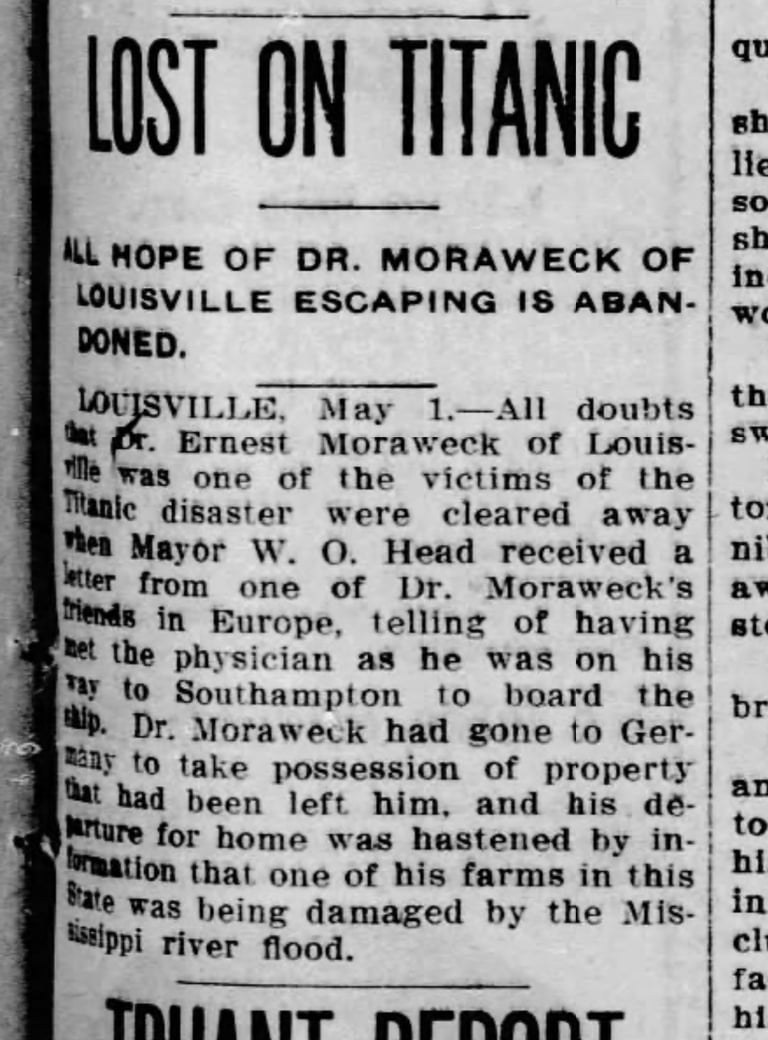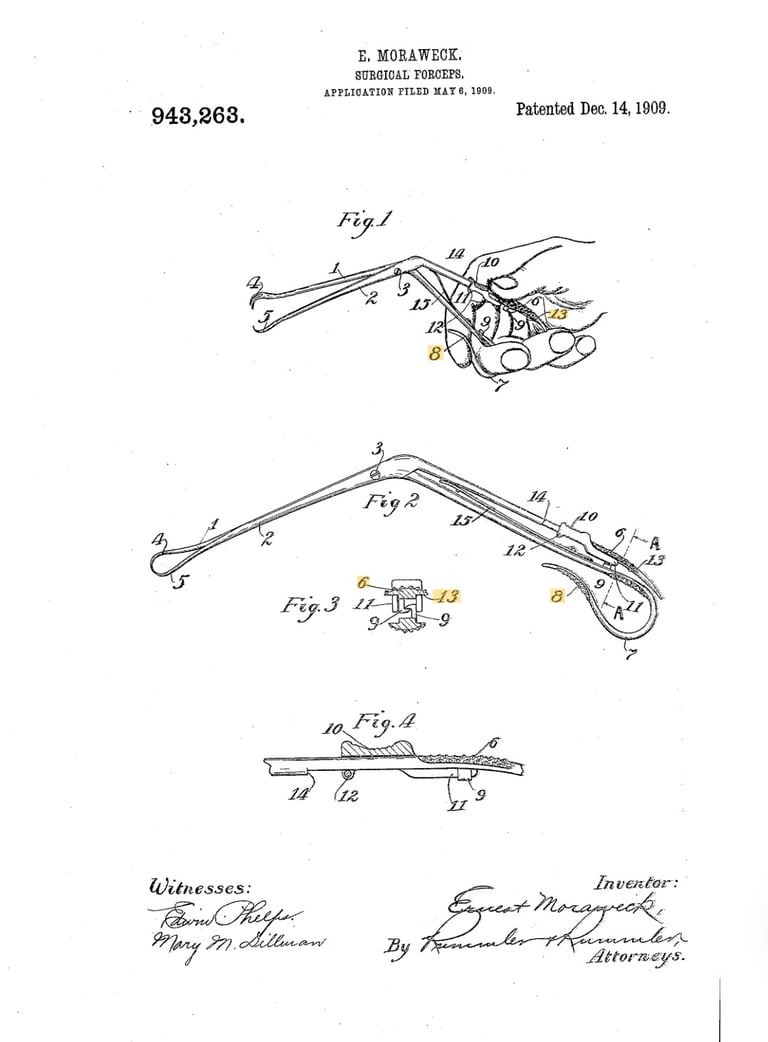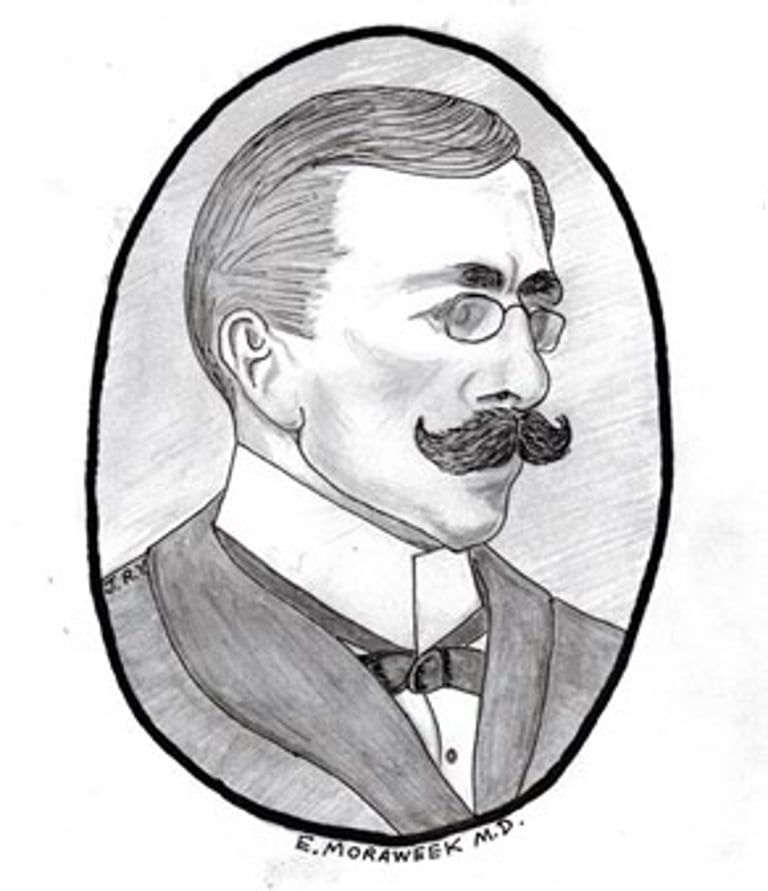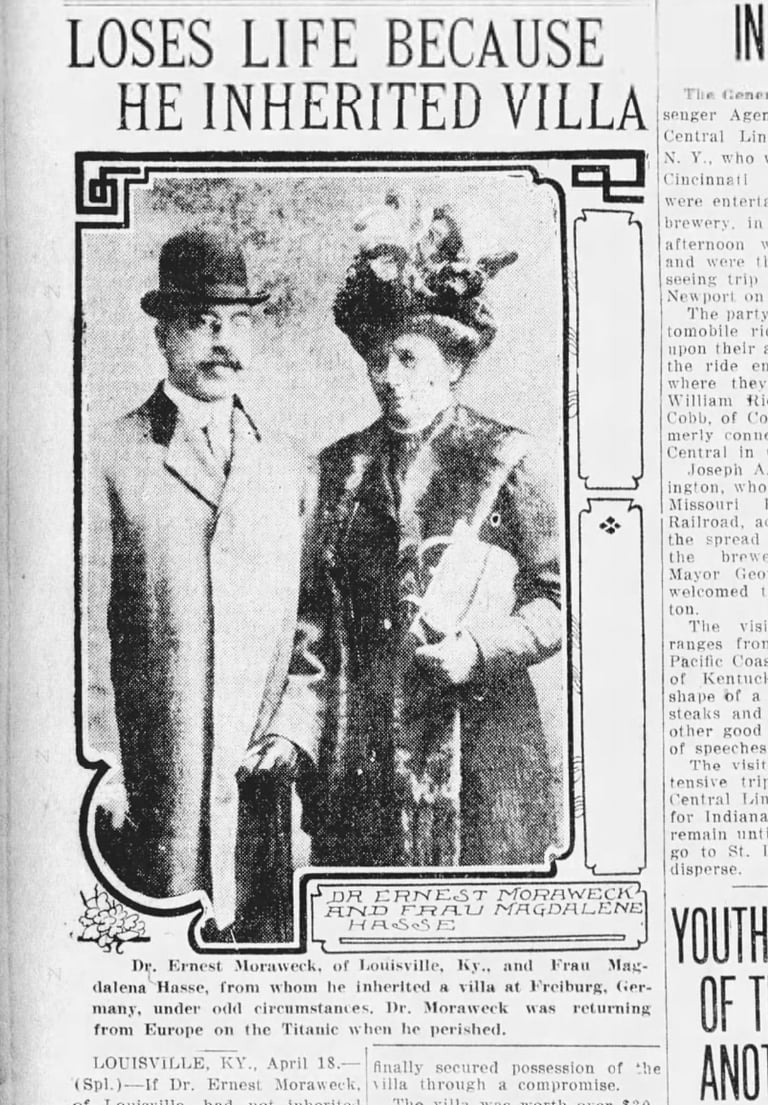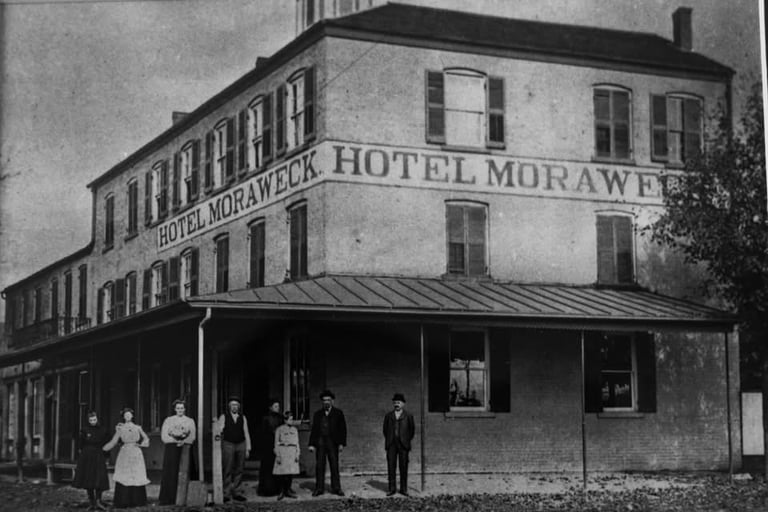The Curious Case of Dr. Ernest Moraweck: Kentucky’s Titanic Doctor and the Mystery of the Widow’s Fortune
When we think of the Titanic’s passengers, we often picture wealthy socialites, emigrants chasing the American dream, or crew members caught in tragedy. But among them was a Kentucky physician whose story blended medical innovation, transatlantic travel, and whispers of scandal: Dr. Ernest Moraweck.
- Aimee Rose-Haynes
10/5/20255 min read
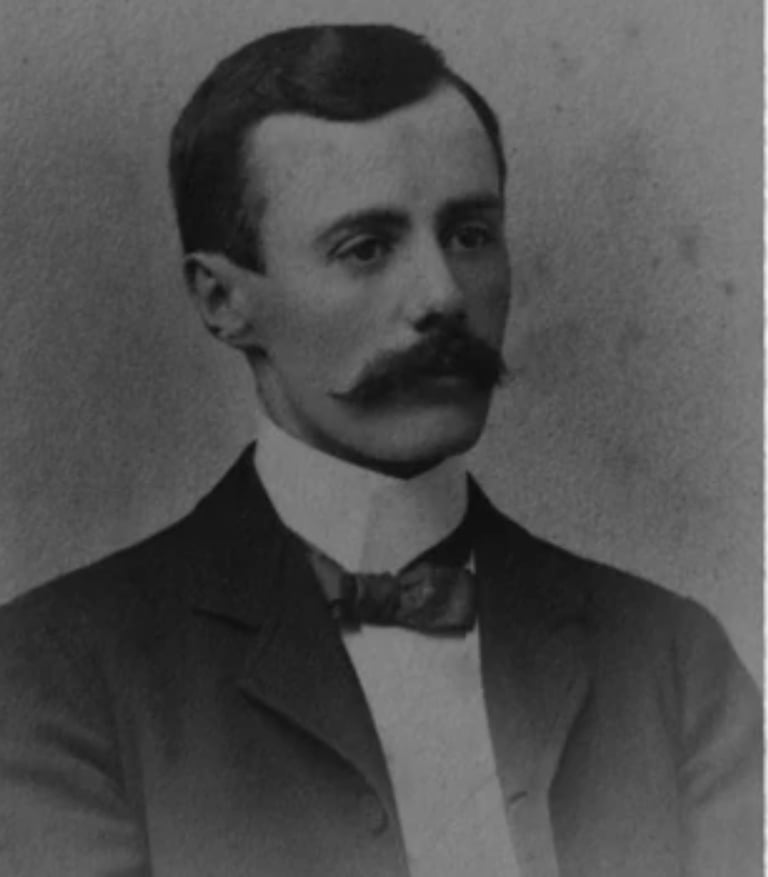

The story of Dr. Ernest Moraweck: from river town hotel to Titanic victim
On a chilly night in April 1912 a Kentucky doctor named Ernest Moraweck vanished with more than 1 500 others when the RMS Titanic slipped beneath the Atlantic. In the days that followed newspapers were unsure whether he was aboard, and some hinted that a scandal might have followed him to his death.
A hotel keeper’s son
Ernest Louis Moraweck was born on 28 February 1858 in Davenport, Iowa. His parents, Anton Moraweck and Claudina Kroboth, were immigrants from the Bohemian and Moravian regions of the Austro‑Hungarian Empire. Soon after his birth the family travelled down the Ohio River to Tell City, Indiana, a settlement where German was widely spoken and backed by the Swiss Colonization Company. Anton bought a three‑story hotel called the Steiner House; after renovating it he renamed it Hotel Moraweck and it became a landmark for river travelers. Ernest grew up living above the taproom and learned to value hard work and hospitality.
As a young adult he worked as a collector for the Frank Fehr Brewing Company in Louisville. He married Emilie Basler, a woman of Bohemian descent from Ohio. The couple moved to Louisville and remained childless. Emilie died in 1904 from an organic heart ailment that took her quickly and unexpectedly. In her will she left her property to her husband. He had her cremated in Cincinnati and she was later interred with her family in the Basler plot in Tell City.
Professional Career
In 1894 he left his job to study medicine. He attended the Kentucky School of Medicine in Louisville and quickly earned a reputation as a skilled lecturer in histology and pathology. He later travelled to Heidelberg University in Germany and the University of Vienna to broaden his education. Moraweck specialized in ear, nose and throat surgery and also practiced ophthalmology. He published cases in medical journals. One report from 1901 recounted a patient who regained her sight after he operated on her eyes. He also patented a novel surgical instrument. He also was a professor at the Kentucky School of Medicine in Louisville in 1904 just after his wife's passing.
By 1912 he was a widower with a thriving practice and a large farm near Brandenburg, Kentucky. The property covered more than 1 ,000 acres and lay near a railroad. Some sources refer to it as Moravian Farm and others as Catinna House. He used this farm as part of his medical practice. He also often spent months in Europe for professional reasons and had become something of a transatlantic commuter.
A friendship with a German widow
Moraweck’s name is most closely linked with Frau Magdalena Hasse, a widow from Freiburg in Germany who was about sixty years old. They met aboard a steamer sailing between Hamburg and New York in 1909 and crossed paths again in St. Louis in 1910. She later visited his farm in Kentucky and died there in April 1910. Her will included a surprising provision: she gave him her villa in Freiburg, which was worth roughly $40, 000. She also requested that her body be cremated in the United States and that her ashes be returned to Germany, an unusual wish at the time. Ernest honored these instructions by arranging her cremation in Indianapolis and sending the ashes back to her family.
Relatives of Frau Hasse were unhappy with the codicil. They accused the American doctor of exerting undue influence and challenged the will in the United States and in Germany. Reports from the period indicate the courts upheld the bequest, although some later writers suggest the inheritance was reduced. Regardless of the outcome, this episode is the only documented instance in which Ernest Moraweck was named as a beneficiary in a non‑family member’s will.
Rumours of other “lonely widows”
After the Titanic disaster some writers and commentators claimed that Dr. Moraweck charmed other wealthy widows who visited his farm and later left him property. These tales appear in later summaries and online forums, but contemporaneous newspapers and legal records do not identify additional women or confirm any other inheritance. An article on the history of otolaryngology notes that it has been suggested he won the confidence of several elderly widows but emphasizes that no proof exists. Without names or probate files to examine, the notion that he repeatedly inherited from multiple widows remains mere speculation.
Final voyage on the Titanic
In April 1912, Dr. Moraweck booked passage from Southampton on Titanic as a second class passenger. He was headed home after several months in Europe managing the Hasse estate and demonstrating a surgical device. When the passenger list first appeared, some in Kentucky wondered if the Ernest Moraweck named there was the same man. Confirmation soon came in a letter sent to Louisville Mayor William O. Head by London banker Benjamin Ball. Ball reported that he had spoken with Dr. Moraweck just before the ship sailed and learned that the doctor was rushing to Southampton because flooding on the Ohio River had submerged his farm and he wanted to return to America quickly.
During the voyage, Moraweck befriended a young Englishwoman named Kate Buss, who later recalled that he was very agreeable. He removed a cinder from her eye and offered to show her New York when they arrived. On the night of 14 April 1912, after the ship hit the iceberg, Buss met him in a corridor. He offered to go and find out why the engines had stopped; she declined his help. He walked away to investigate and was not seen again. The doctor did not survive the sinking, and his body was never recovered.
His own will
In 1904 he drew up a will in Louisville that divided his estate, estimated between $50, 000 and $75, 000, equally between his sister Claudina Coldewey and his brother Alvin Moraweck. He also asked that his body be cremated at the nearest crematory; because his remains were never found this request could not be fulfilled. His farm in Meade County, which was valued at about $40 ,000 passed to his brother. This land would later be owned by Olin Mathieson Chemical Group then sold again to the Ditto family
A life of contradictions
Dr. Ernest Moraweck embodied many of the tensions of his era. He was born to immigrants, grew up sweeping floors in a riverfront hotel and then became a respected surgeon, lecturer and inventor. He forged connections with European colleagues and introduced advanced surgical methods to Kentucky. His friendship with Magdalena Hasse generated a fortune that, rightly or wrongly, clouded his reputation after his death. The Titanic disaster took away any chance he had to answer his critics, and in the absence of his voice myths have flourished.
Only one wealthy widow, Magdalena Hasse, is known to have named him as her heir, and courts validated her codicil. His own will primarily benefited his siblings. Beyond those facts, stories of multiple wills and mysterious deaths are unsupported by evidence. Ernest Moraweck deserves remembrance not just as a Titanic victim or the subject of gossip but also as a physician who bridged continents, invented a surgical instrument, published in medical journals, and made lasting contributions to both medicine and Kentucky history.
